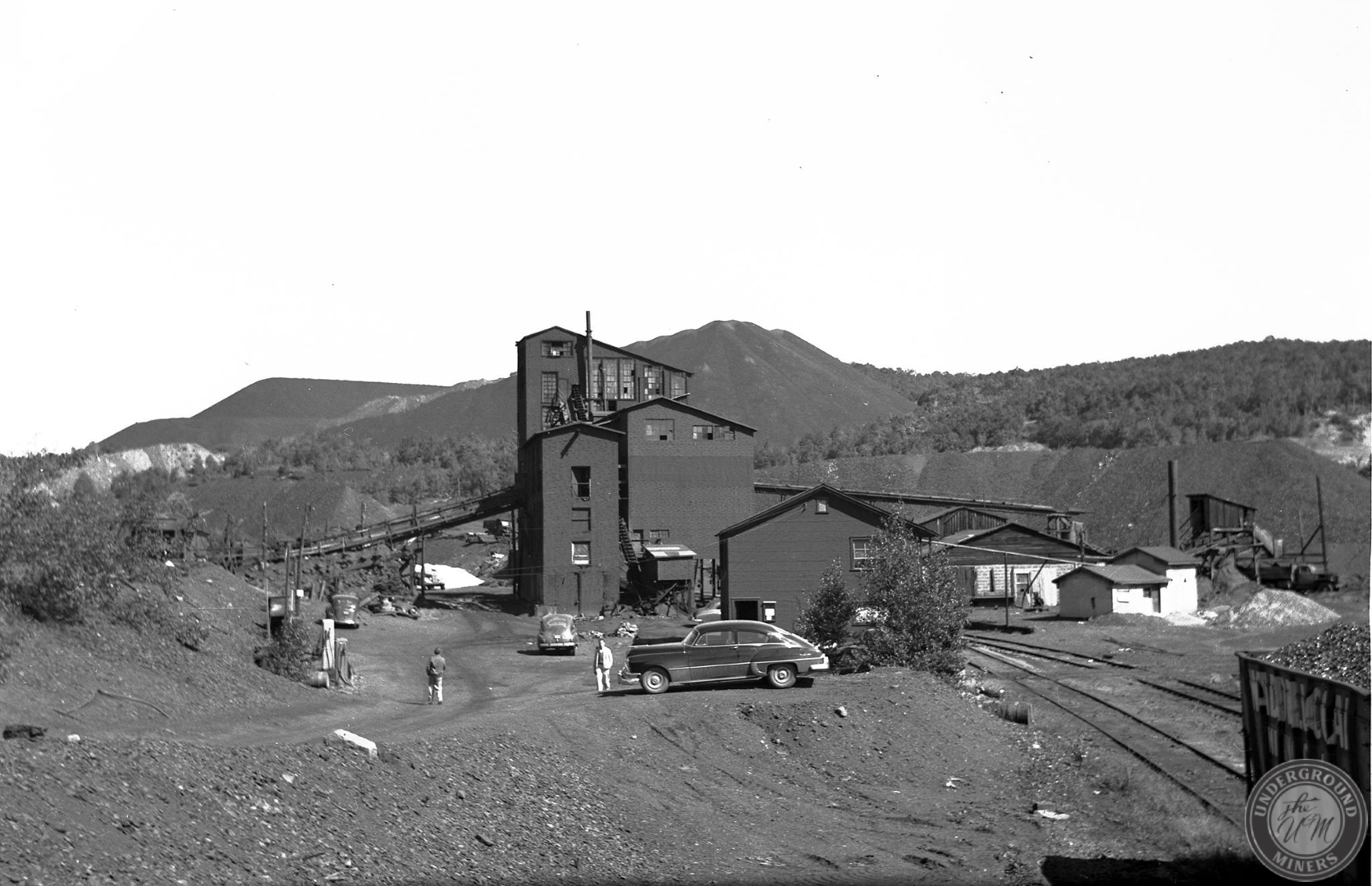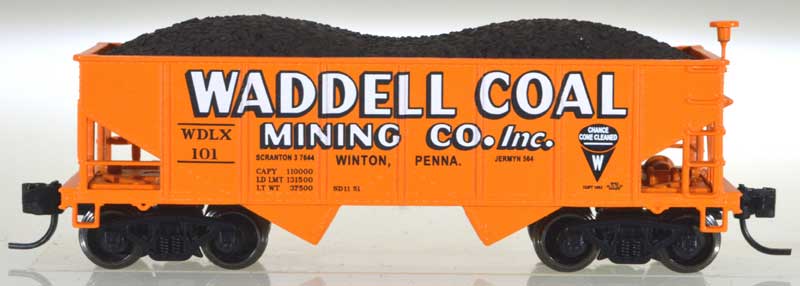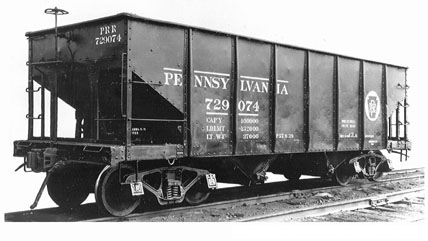Model Information: Bowser originally produced these models in kit form. However, all releases since 2007 or so are in Ready-To-Run (RTR) form. The kit form it included: a one piece plastic molded body, underframe, brake wheel, air reservoir, brake cylinder, control valve, X2f and McHenry KS couplers, plastic trucks/wheels and steel car weights.
This model comes in two variations: a vertical and a horizontal brake wheel. The ones with vertical brake wheels are delicate, so handle them with care. The plastic loads that come with the cars are low-to-mid grade quality and not up to the standards of the rest of this quite excellent car. Recent releases use high grade (MTL clone) body-mounted couplers and blackened metal wheels and are easily a nice value for their relatively low cost.
This model comes in two variations: a vertical and a horizontal brake wheel. The ones with vertical brake wheels are delicate, so handle them with care. The plastic loads that come with the cars are low-to-mid grade quality and not up to the standards of the rest of this quite excellent car. Recent releases use high grade (MTL clone) body-mounted couplers and blackened metal wheels and are easily a nice value for their relatively low cost.
Prototype History: In 1898, Pressed Steel Car Co. built the first all-steel hopper car designated the GL. The Pennsylvania Railroad would purchase several thousand of this design. Due to production backlogs at P.S.C.Co. and flaws in the initial design, the Penny came up with its own all-steel, bottom-discharge hopper car in 1904 designated the GLa. Approximately 30,000 GLa's were produced between 1904 and 1920. The Pennsy also built Gla's for numerous coal companies who were anxious for the well-built and reasonably priced cars. Until the 1960s, this design was one of the three most numerous classes of PRR freight cars. Although by this time, these cars began to rapidly disappear from the PRR roster, a few made it into the Penn Central and even Conrail rosters, lasting into the early 1980s.
Road Name History:  The Waddell Breaker, or Waddell Coal Mining Co. was put in operation in the late 1800’s. It was originally serviced by the O&W railroad. Sometime in the early 1900s, the breaker was rebuilt as a wet coal preparation plant. Although the breaker was destroyed by fire in the 1963, the machinery was salvaged inside the framework and continued to process coal up until the end of the 1980’s under the name American Silt Co. The breaker was owned by Pete Brojack, and sometimes referred to as the Brojack Breaker. A unique aspect of the operation was in the 1950s the O&W dedicated 5 specially painted hopper cars to be used in service taking coal from the Waddell breaker to the Keyser Valley Coal Pockets, at 1500 N Keyser Ave, Scranton, where the cars would be used as bins to hold coal for filling of delivery trucks. The cars were painted in a brilliant bright orange scheme as a billboard advertisement for the Waddell Coal brand. These cars were never taken out on the mainline and remained in use only on the Capouse branch traveling from Keyser Ave to Winton. When the O&W folded, the Erie Lackawanna Railroad briefly took over rail traffic but soon the line was abandoned and pulled up. The Waddell cars were stranded at Keyser Ave, and continued to be used as coal pockets, being filled from behind using trucks. At some point the coal dealer closed, these cars were scrapped and RJ Walker built on the site. Remains of the Waddell Breaker, out buildings, and miscellaneous mine equipment on site were finally scrapped and an old shaft used for pumping water for the breaker was filled in the summer of 2003. One of the last things to be scrapped was an old Erie Lackawanna Hopper car stranded at the breaker site.
The Waddell Breaker, or Waddell Coal Mining Co. was put in operation in the late 1800’s. It was originally serviced by the O&W railroad. Sometime in the early 1900s, the breaker was rebuilt as a wet coal preparation plant. Although the breaker was destroyed by fire in the 1963, the machinery was salvaged inside the framework and continued to process coal up until the end of the 1980’s under the name American Silt Co. The breaker was owned by Pete Brojack, and sometimes referred to as the Brojack Breaker. A unique aspect of the operation was in the 1950s the O&W dedicated 5 specially painted hopper cars to be used in service taking coal from the Waddell breaker to the Keyser Valley Coal Pockets, at 1500 N Keyser Ave, Scranton, where the cars would be used as bins to hold coal for filling of delivery trucks. The cars were painted in a brilliant bright orange scheme as a billboard advertisement for the Waddell Coal brand. These cars were never taken out on the mainline and remained in use only on the Capouse branch traveling from Keyser Ave to Winton. When the O&W folded, the Erie Lackawanna Railroad briefly took over rail traffic but soon the line was abandoned and pulled up. The Waddell cars were stranded at Keyser Ave, and continued to be used as coal pockets, being filled from behind using trucks. At some point the coal dealer closed, these cars were scrapped and RJ Walker built on the site. Remains of the Waddell Breaker, out buildings, and miscellaneous mine equipment on site were finally scrapped and an old shaft used for pumping water for the breaker was filled in the summer of 2003. One of the last things to be scrapped was an old Erie Lackawanna Hopper car stranded at the breaker site.

Brand/Importer Information: On May 1, 1961, Bowser was purchased by Lewis and Shirlee English and moved from Redlands, CA to their basement in Muncy, PA. The original Bowser Manufacturing Co first advertised in the model railroad magazines in November 1948. At that time, the company had only one (HO Scale) engine, the Mountain, which had a cast brass boiler that is no longer available. It was sometime later that Bowser (Redlands) developed the NYC K-11 and the UP Challenger. The molds were made by K. Wenzlaff who introduced himself at the MRIA Show in Pasadena, CA in 1985 These two locomotives are still current production.
Bowser entered into N Scale in 1998 with their acquisition of the Delaware Valley Car Company, a manufacturer of N scale freight cars.
Bowser entered into N Scale in 1998 with their acquisition of the Delaware Valley Car Company, a manufacturer of N scale freight cars.
Item created by: Lethe on 2015-10-02 10:12:25. Last edited by CNW400 on 2020-05-26 11:56:14
If you see errors or missing data in this entry, please feel free to log in and edit it. Anyone with a Gmail account can log in instantly.
If you see errors or missing data in this entry, please feel free to log in and edit it. Anyone with a Gmail account can log in instantly.










